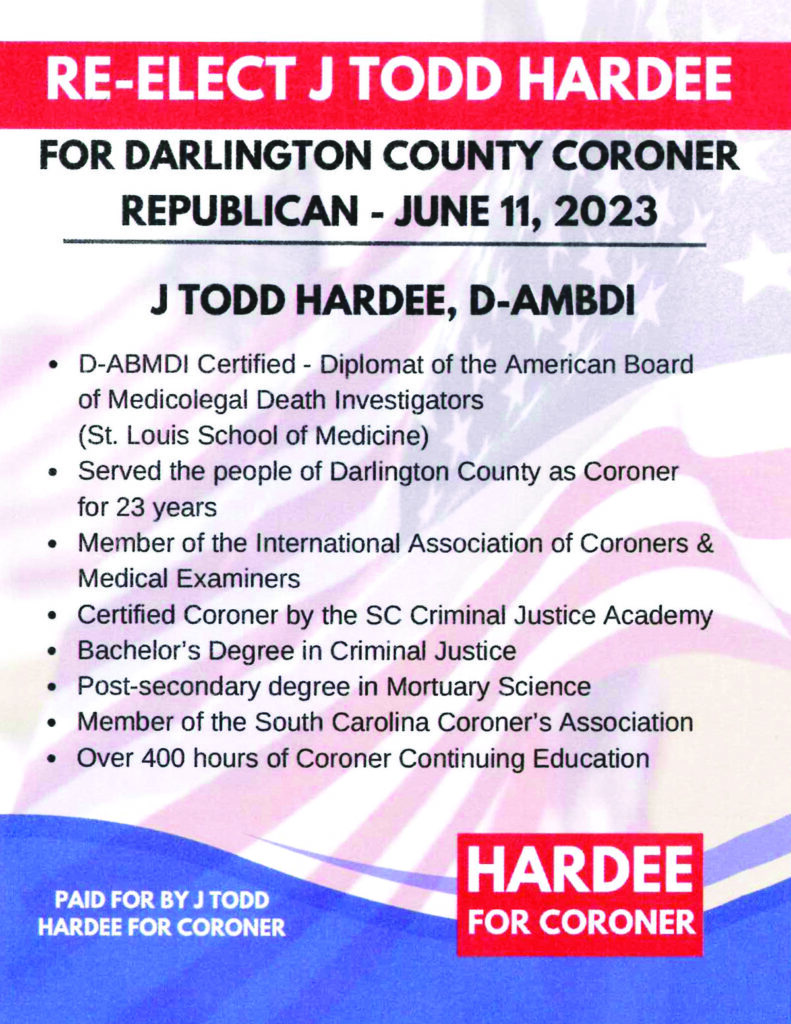Phrenology in Darlington County


Thomas Park Lide. PHOTO FROM DARLINGTON COUNTY HISTORICAL COMMISSION & MUSEUM



Charles Edgar Wells. PHOTO FROM DARLINGTON COUNTY HISTORICAL COMMISSION & MUSEUM



Phrenology Literature from the past. PHOTO FROM DARLINGTON COUNTY HISTORICAL COMMISSION & MUSEUM
By Brian Gandy Director,
Darlington County Historical Commission & Museum
As many of you know, we are designing and building a new Darlington County Museum that will be attached to our current facility at the old County Jail. As the building is being designed, I am already working on the exhibit plan for what will fill the main gallery. This work has me digging very deeply into our collection and I am often amazed at the remarkable treasures that I find. On this occasion, I was searching through our biographical files for information on Col. E.W. Charles to assist a patron doing genealogical research. Charles was a formative figure in Darlington’s early establishment and has the distinction of being the Darlington District’s first banker. He served as Darlington’s first Intendent (mayor), was a prominent merchant and planter, was district senator after serving in the House of Representatives and was a delegate to the Secession Convention. Yet I was somewhat shocked by what I found: An original phrenological chart on Col. Edgar Wells Charles. In fact I was so curious that I pulled out my phone to search phrenology. Google let me know that it was a Victorian-era pseudoscience. The main principle was the belief that a trained expert could accurately and scientifically evaluate personality traits and ability by mapping the bumps and curves on your skull. One of my coworkers at the Historical Commission shared an article with me that former historian Horace Rudisill wrote in 1988. In the article he alluded to how astonished the nation was when we learned that President Ronald Reagan and his wife, Nancy, used astrology in the White House. Horace stated that in Darlington County, “the practice of phrenology was widespread … possibly not a superstition, but surely weird and bordering on the occult, according to some observers.” The Historical Commission is fortunate to have three original documents connected with phrenology. These documents also prove that at least three of the county’s most prominent civic and religious leaders were deeply involved in the “science” of phrenology. At this point, the only thought I had was that history tends to repeat itself. It appears that the fad was introduced into the Darlington District in the 1840s by a nationally-known professor of phrenology, Dr. Allan B. Avery, who did head-readings all over the region. The only copy of one of his readings known to exist in this area was done in chart form, with a person’s characteristics rated on a scale of 1 to 6. It is titled “A Phrenological Description of the Head of Col. E.W. Charles” and although his subject did not make a 6 in any category, he did rate a 5 in “conscientiousness.” We have another county resident, from near Lydia, David G. Wood, who also served a stint in the South Carolina Legislature representing Darlington and who was also enthralled with phrenology. He studied it intensely and become a self-styled “practical phrenologist.” He did head-readings throughout the district, but his were in book form. He had a 47-page booklet printed with numerous multiple-choices under each personal trait— and he would then circle the appropriate one. As nearly as can be determined, the Historical Commission has the only known extant copy of one of Wood’s head readings. It was done in the mid-1850s for Sarah Stewart, then a teenage girl. She later became the wife of John W. Alexander and spent the last years of her life in the Pine Grove Community of Darlington County. Because as a historian, you always dig deeper, I was able to find the phrenological chart of Thomas Park Lide. Lide was born in Society Hill in 1810 and died in Darlington in 1882. He was extremely involved in the affairs of Welsh Neck Baptist Church, having served as church clerk, deacon and associational delegate on several occasions. He was educated at Furman University, the oldest private university in South Carolina, and was noted as being one of Darlington’s most popular and wealthy citizens. He was also a charter member of the Darlington District Agricultural Society and served as its president for 22 years. In politics, he served in both the U.S. House of Representatives and in the state Senate. Lide’s chart was done in 1848 and was scored on a different scale than Charles’. Lide seemed to do very low on temperament. Today, science has totally discredited the field of phrenology, but during the antebellum days of Darlington, this craze was socially acceptable, popular and lucrative. In 2021, how would we view politicians and religious leaders allowing “doctors” to examine the bumps and curves on their scalp to predict their aptitude, characteristics and personality traits? We would call it QUACKERY. Historically speaking, we can be thankful to phrenology for some pretty common words we use today: highbrow, lowbrow and well-rounded. For my next installment from the collections at the Darlington County Historical Commission, we will examine the strange phenomenon of the mid-1800s: Darlington News’ report of the “Hissing Serpent in the Sky over Mechanicsville.”


